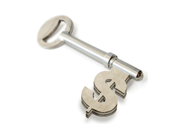
Clean up

Yes, it’s Captain Obvious, but you’d be surprised. Make sure your whole property is neat and tidy when buyers arrive, including the garden and outside areas.
Dust, vacumn, scrub, wash, buff – make all those annoying tasks earn their keep.
Don’t forget to clean inside ovens, cupboards and wardrobes, in case potential buyers indulge a snoop. Remove shoes from the entrance and any hazards people might trip over.
Get the big clean out of the way in advance, then keep your place in good condition while your place is on the market. That way you should only need a refresh to prepare for a new inspection date, rather than a top to bottom makeover.
Clear out the mailbox and get those rubbish bins emptied and, ideally, out of sight (especially if they’re normally one of the first things people will see arriving at your home).
Enlist a professional declutterer if you need a hand – or a friend might even help out. Get a second opinion who can review objectively.
Invite light and air

Air out your home thoroughly before the inspection, so it feels as fresh and clean as possible. If potential buyers feel stuffy they’ll head straight for the door.
If the weather and security permits, crack open a window or two during the inspections themselves, so air keeps flowing through.
Draw back curtains and blinds to bring in as much as light as possible and show off your house from the street.
Help your pets camouflage

One of the most common complaints from potential buyers at open for inspections are those tell tale signs you share your home with someone furry. If they’re not yours, pet smells or stains can actively turn someone off your property.
Deodourise your property to remove the whiff of little creatures and get someone who doesn’t normally live there to confirm you’re clear (you might be used to it and can’t sniff what others can).
Clean traces of hair from floors and furniture, stow feeding bowls and toys.
Remove any litterboxes or droppings from the yard, and give your pets a vacation during inspections.
Personal touches

A personal touch here and here helps your home feel less stagey or artificial, and can spark an emotional connection with a buyer.
One idea is to gather up photos that show off your house (at its best, of course) and put them in an album for people to flick through if they’re curious or inspired. If you don’t have printed photos, you could have an iPad or digital photo frame on rotation.
Fresh flowers are another way to add personality, or a small dish of sweets near the door that people can grab on their way in or out. Remember, it’s not about mints on the pillow, it’s about keeping humanity in the home.
Smell-o-vision
 People fuss over the visual but often forget that it’s a nose can make or break an open inspection.
People fuss over the visual but often forget that it’s a nose can make or break an open inspection.
Remove smells that are unpleasant, like stinky shoes, and watch out for specific food smells that may not agree with everyone.
Counter the ick with inviting smells using flowers, candles, air fresheners or even freshly brewed coffee.
Just take care your smell engineering doesn’t become too sickly or overpowering, and avoid pungent aromas like incense. You want your property to smell like a home, not a perfumery!
A home staging consultant can help with these touches, and can also advise about furniture, artwork and other style elements that can help your place come to life for buyers.
Strike the right temperature

Keep an eye on the weather and heat or cool your home so it’s optimal when would-be buyers walk through.
People shoudn’t raise a sweat or a chill, and you need to demonstrate your property can effortlessly cope with the climate around it. You should be aiming to give them a cool or warm blast, depending on what’s most welcome at that time.
If heating or cooling is malfunctioning and impossible to fix for inspection time, place fans or portable heaters strategically so they don’t get in the way but still do the job.
Safety first
 Whether you’re attending the inspection or not, you should take care to remove and protect anything precious or valuable before you open your house up to strangers – just in case one of them is light fingered.
Whether you’re attending the inspection or not, you should take care to remove and protect anything precious or valuable before you open your house up to strangers – just in case one of them is light fingered.
Check with your insurers about your coverage for an open inspection, and if you need to do something extra to stay protected.
You can take items with you if you’re leaving the premises for the inspection, or lock them up in a safe or secure cupboard or drawer. If you don’t have an area you can lock away, hide them in the back of a wardrobe or somewhere out of sight and mind.
Agents usually record the details of people coming through your property, to deter thieves and provide some accountability if anything ends up missing or damaged. However this isn’t a perfect system and shouldn’t be relied upon.
Make sure your property is safe for people to walk through and only let people into your house at the specified inspection times. It’s better to cancel than invite disaster!
Have paperwork ready

Though most buyers don’t get to the negotiating stage during a walk through, it pays to be ready with all the information a visitor might want.
Work with your agent to have any relevant paperwork (renovation history, pest documentation, approvals for further development) in the property ready to be reviewed or go home with serious parties.
The less buyers have to ask, they more at ease they’ll feel in the property and the more time they’ll be able to spend imagining themselves in it.
And just in case someone decides to snap your property up on the spot, you’ve got all you need to proceed with the discussion.
Make yourself scarce

While your house is getting the once over, you should leave potential buyers to wander your halls unencumbered and relaxed.
Coordinate with your agent and be ready to head out for a short time, taking any other family members or inhabitants with you (including the pets). Have a timetable of all planned inspections somewhere central, and a copy to take with you.
Have a bag ready so you can leave quickly (this is also handy for any unplanned inspections). Don’t forget to do a quick pass through on the way out, clearing away any new messes or misplaced objects, like toys.
Source: realestate.com.au















